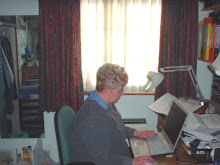Once again I have been caught by the temptation of making progress with working on the data, rather than talking about it to the readers of this blog. But when Ancestry’s index and film images came online on Tuesday night, I was curious to have a look. I was surprised to find that I could browse the census pages at will.
The first thing I noticed was that Ancestry had 8390 images of census returns to offer for Toronto in 1861. They had filmed both sides of each folio or household census returns and called each one an image. This meant there were, at the most, only 4195 households in Toronto covered by the census. With two wards still to be done I was sure I had covered more households than that.
Yesterday morning I checked through Ancestry’s images, noting the ward, division and folio number for every 500th image. They started with St Andrew’s—which I haven’t seen yet—and went through the other wards in alphabetical order until they reached St John’s. St Lawrence’s and St Patrick’s should have followed on, but they didn’t.
The ward divisions in St Andrew’s jumped from One to Five very quickly, so I did a more inclusive check. Only a few pages of the divisions in between are available. I am curious to know what I shall find on the film on order through LDS.
The images that Ancestry have provided are much cleaner that those I have been looking at. They are using the same 1955 National Archives filming that is available through Ontario Archives, various libraries in Canada, and the LDS, but someone has waved the magic wand of technology over them, vacuuming away the pock marks and, therefore, clarifying the writing. I am dying to know what Ancestry’s transcribers managed to find on the pages I simply could not read.
It has to be admitted that it is much easier reading an old census off a still computer screen than off the screen of a microfilm reader which seems to be equipped with an over-sensitive handle anxious to move you on to the next image before you have even focussed on the one you want to see. This is one reason why I started taking my camera to the library.
Is my transcription still going to be useful? Maybe not so much as it would have been without Ancestry’s provision. However, one of my aims has been to build links to other data covering the same people in the same timeframe. Another is to analyse the population statistically, something that will satisfy my own curiosity if not anyone else’s. Yes, I’m going on.




No comments:
Post a Comment